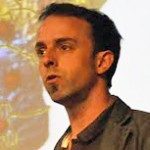Link to Pubmed [PMID] – 21159115
Cell. Microbiol. 2011 May;13(5):705-16
African trypanosomes are flagellated protozoan parasites responsible for sleeping sickness and transmitted by tsetse flies. The accomplishment of their parasite cycle requires adaptation to highly diverse environments. These transitions take place in a strictly defined order and are accompanied by spectacular morphological modifications in cell size, shape and positioning of organelles. To understand the molecular bases of these processes, parasites isolated from different tissues of the tsetse fly were analysed by immunofluorescence with markers for specific cytoskeleton components and by a new immunofluorescence-based assay for evaluation of the cell volume. The data revealed striking differences between proliferative stages found in the midgut or in the salivary glands and the differentiating stage occurring in the proventriculus. Cell proliferation was characterized by a significant increase in cell volume, by a pronounced cell elongation marked by microtubule extension at the posterior end, and by the production of a new flagellum similar to the existing one. In contrast, the differentiating stage found in the proventriculus does not display any increase in cell volume neither in cell length, but is marked by a profound remodelling of the posterior part of the cytoskeleton and by changes in molecular composition and/or organization of the flagellum attachment zone.



